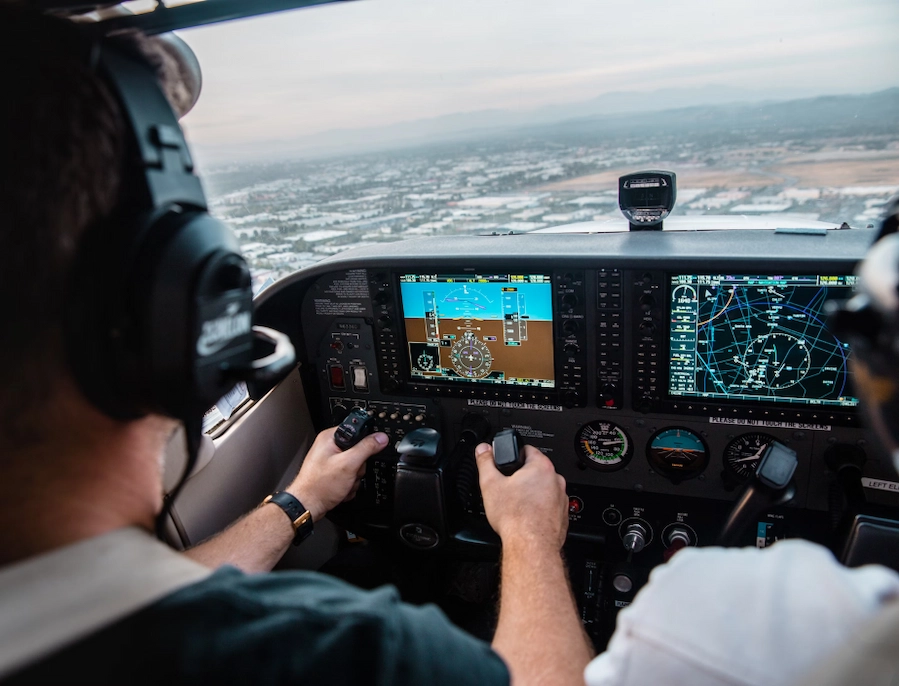
According to McKinsey, each day, airlines need to transport nearly five million people across more than 40 million air miles worldwide. However, this is merely the basic requirement. Besides in-flight operations such as passenger services, crew coordination, and ensure aircraft safety measures, the airline industry is also tasked with ground handling, baggage management, and aircraft maintenance scheduling upon landing. Therefore, to navigate these challenges, businesses need to follow the best practices to maximize efficiency.
Implementing Integrated Operations Control Systems
Integrated Operations Control Systems (IOCS) are comprehensive software solutions that provide real-time visibility and control over various aspects of airline operations, including flight scheduling, crew management, aircraft maintenance, and fuel management. By implementing IOCS, airlines can centralize data, streamline communication, and make data-driven decisions to optimize resource utilization, minimize disruptions, and enhance operational efficiency. Businesses can begin Integrated Operations Control Systems (IOCS) by leveraging data analytics. Furthermore, the airline industry can also gather and consolidate operational data, then analyze it to gain insights to optimize airline operations, such as flight scheduling and maintenance planning. Finally, organizations can centralize and visualize data on the system and distribute it to stakeholders for informed decision-making.

The pilot and an aircraft's control panel
Embracing Predictive Analytics for Decision-Making
Predictive analytics leverages historical data, machine learning algorithms, and advanced statistical techniques to forecast future events and trends. It's an inevitable trend in the aviation industry, driven by the market's value, which was at 5.29 billion U.S. dollars in 2020 and is forecasted to grow to 41.52 billion U.S. dollars by 2028. Airlines can harness predictive analytics to anticipate passenger demand, optimize flight schedules, and proactively identify potential operational challenges such as weather disruptions or equipment failures. By leveraging predictive analytics, airlines can make informed decisions, mitigate risks, and improve overall operational performance.
Integrating AI in Crew Resource Management
Crew Resource Management is a training program designed to enhance teamwork, communication, and decision-making skills among flight crew members. Effective Crew Resource Management practices ensure effective coordination and collaboration within flight crews, leading to safer and more efficient flight operations. Airlines should prioritize Crew Resource Management training for their flight crews to foster a culture of safety, professionalism, and excellence in operations. While traditionally rooted in interpersonal skills and teamwork, contemporary CRM strategies now integrate innovative technologies like Artificial Intelligence (AI) to elevate crew performance to new heights.
By integrating AI-driven solutions into CRM training programs, businesses can empower flight crews with cutting-edge tools and simulations that enhance decision-making, communication, and situational awareness. These advancements not only reduce errors but also optimize operational efficiency, ultimately fostering a culture of excellence and safety within flight operations. For example, by processing information on weather conditions, airspace congestion, and aircraft performance, these systems assist crews in making informed decisions, optimizing routes, and mitigating various safety risks.
Streamlining Ground Handling Operations with Robotic Process Automation
Ground handling operations play a pivotal role in the seamless operation of airlines, encompassing many tasks essential for safe and efficient aircraft turnaround. While traditional methods have served their purpose, modernizing ground-handling practices with cutting-edge technologies like Robotic Process Automation (RPA) offers a transformative approach to operational excellence. RPA technology can automate repetitive and rule-based tasks involved in ground handling, such as luggage handling, check-in, and boarding. By deploying software robots to perform these tasks with speed and accuracy, airlines can minimize manual errors, reduce turnaround times, and enhance overall efficiency. One example is RPA in luggage handling, which can automate luggage sorting based on flight destinations or passenger itineraries. Thus, automation can free up effort for ground handling staff and reduce the risks of error leading to delayed, lost, or left-behind luggage.

Passenger luggage on conveyor belt
Continuous Monitoring and Performance Improvement
Continuous monitoring and performance improvement are key principles of effective airline operation management. Airlines should regularly monitor key performance indicators (KPIs), analyze operational data, and identify areas for improvement. By implementing a culture of continuous improvement, airlines can identify bottlenecks, implement corrective actions, and optimize processes to achieve operational excellence.
Strategic management of airline operations necessitates the utilization of advanced technologies, robust processes, and a dedication to excellence. By implementing best practices such as integrated operations control systems, predictive analytics, crew resource management, streamlined ground handling operations, and continuous performance improvement, airlines can optimize their operations, enhance efficiency, and deliver exceptional service to passengers.






























